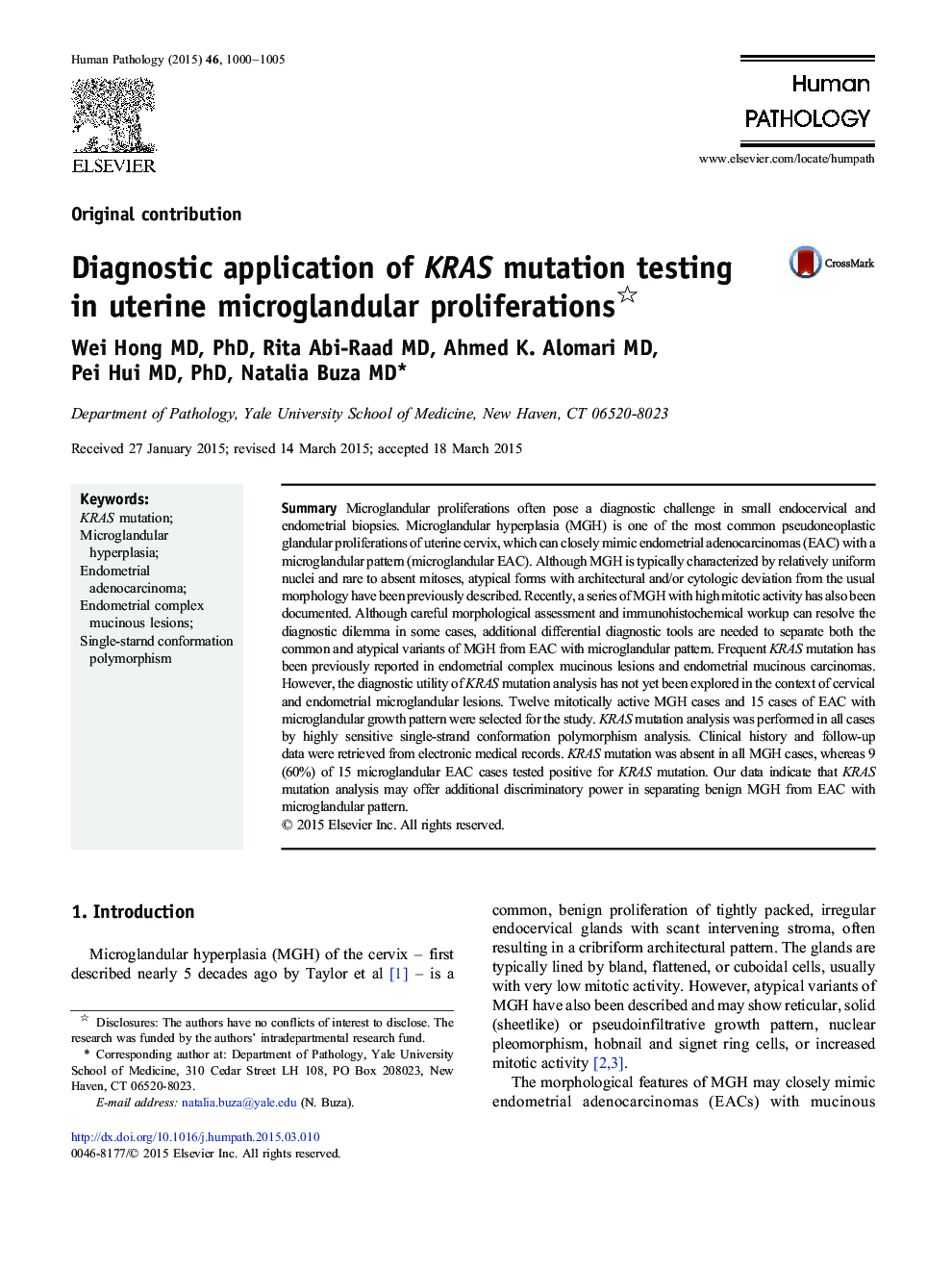| Article ID | Journal | Published Year | Pages | File Type |
|---|---|---|---|---|
| 4132837 | Human Pathology | 2015 | 6 Pages |
SummaryMicroglandular proliferations often pose a diagnostic challenge in small endocervical and endometrial biopsies. Microglandular hyperplasia (MGH) is one of the most common pseudoneoplastic glandular proliferations of uterine cervix, which can closely mimic endometrial adenocarcinomas (EAC) with a microglandular pattern (microglandular EAC). Although MGH is typically characterized by relatively uniform nuclei and rare to absent mitoses, atypical forms with architectural and/or cytologic deviation from the usual morphology have been previously described. Recently, a series of MGH with high mitotic activity has also been documented. Although careful morphological assessment and immunohistochemical workup can resolve the diagnostic dilemma in some cases, additional differential diagnostic tools are needed to separate both the common and atypical variants of MGH from EAC with microglandular pattern. Frequent KRAS mutation has been previously reported in endometrial complex mucinous lesions and endometrial mucinous carcinomas. However, the diagnostic utility of KRAS mutation analysis has not yet been explored in the context of cervical and endometrial microglandular lesions. Twelve mitotically active MGH cases and 15 cases of EAC with microglandular growth pattern were selected for the study. KRAS mutation analysis was performed in all cases by highly sensitive single-strand conformation polymorphism analysis. Clinical history and follow-up data were retrieved from electronic medical records. KRAS mutation was absent in all MGH cases, whereas 9 (60%) of 15 microglandular EAC cases tested positive for KRAS mutation. Our data indicate that KRAS mutation analysis may offer additional discriminatory power in separating benign MGH from EAC with microglandular pattern.
